This article is from the forthcoming book Censored 2013: Dispatches from the Media Revolution and intends to expose the lies of American leadership in order to uncensor the “unhistory” of the Kent State massacre, while also aiming toward justice and healing, as censoring the past impacts American Occupy protesters today.
by Laurel Krause with Mickey Huff

Shooting guardsmen at Kent State University on May 4, 1970, photograph taken by John A. Darnell Jr.
When Ohio National Guardsmen fired sixty-seven gun shots in thirteen seconds at Kent State University (KSU) on May 4, 1970, they murdered four unarmed, protesting college students and wounded nine others. For forty-two years, the United States government has held the position that Kent State was a tragic and unfortunate incident occurring at a noontime antiwar rally on an American college campus. In 2010, compelling forensic evidence emerged showing that the Federal Bureau of Investigation (FBI) and the Counter Intelligence Program (COINTELPRO) were the lead agencies in managing Kent State government operations, including the cover-up. At Kent State, lawful protest was pushed into the realm of massacre as the US federal government, the state of Ohio, and the Ohio National Guard (ONG) executed their plans to silence antiwar protest in America.
The new evidence threatens much more than the accuracy of accounts of the Kent State massacre in history books. As a result of this successful, ongoing Kent State government cover-up, American protesters today are at much greater risk than they realize, with no real guarantees or protections offered by the US First Amendment rights to protest and assemble. This chapter intends to expose the lies of the state in order to uncensor the “unhistory” of the Kent State massacre, while also aiming toward justice and healing, as censoring the past impacts our perspectives in the present.
The killing of protesters at Kent State changed the minds of many Americans about the role of the US in the Vietnam War. Following this massacre, there was an unparalleled national response: hundreds of universities, colleges, and high schools closed across America in a student strike of more than four million. Young people across the nation had strong suspicions the Kent State massacre was planned to subvert any further protests arising from the announcement that the already controversial war in Vietnam had expanded into Cambodia.
Yet instead of attempting to learn the truth at Kent State, the US government took complete control of the narrative in the press and ensuing lawsuits. Over the next ten years, authorities claimed there had not been a command-to-fire at Kent State, that the ONG had been under attack, and that their gunfire had been prompted by the “sound of sniper fire.” Instead of investigating Kent State, the American leadership obstructed justice, obscured accountability, tampered with evidence, and buried the truth. The result of these efforts has been a very complicated government cover-up that has remained intact for more than forty years.1
The hidden truth finally began to emerge at the fortieth anniversary of the Kent State massacre in May 2010, through the investigative journalism of John Mangels, science writer at the Cleveland Plain Dealer, whose findings supported the long-held suspicion that the four dead in Ohio were intentionally murdered at Kent State University by the US government.
Mangels commissioned forensic evidence expert Stuart Allen to professionally analyze a tape recording made from a Kent State student’s dormitory window ledge on May 4, 1970, forever capturing the crowd and battle sounds from before, during, and after the fusillade.2 For the first time since that fateful day, journalists and concerned Americans were finally able to hear the devastating soundtrack of the US government murdering Kent State students as they protested against the Vietnam War.
The cassette tape—provided to Mangels by the Yale University Library, Kent State Collection, and housed all these years in a box of evidence admitted into lawsuits led by attorney Joseph Kelner in his representation of the Kent State victims—was called the “Strubbe tape” after Terry Strubbe, the student who made the recording by placing a microphone attached to a personal recorder on his dormitory window ledge. This tape surfaced when Alan Canfora, a student protester wounded at Kent State, and researcher Bob Johnson dug through Yale library’s collection and found a CD copy of the tape recording from the day of the shootings. Paying ten dollars for a duplicate, Canfora then listened to it and immediately knew he probably held the only recording that might provide proof of an order to shoot. Three years after the tape was found, the Plain Dealer commendably hired two qualified forensic audio scientists to examine the tape.
But it is really the two pieces of groundbreaking evidence Allen uncovered that illuminate and provide a completely new perspective into the Kent State massacre.
First, Allen heard and verified the Kent State command-to-fire spoken at noon on May 4, 1970. The command-to-fire has been a point of contention, with authorities stating under oath and to media for forty years that “no order to fire was given at Kent State,” that “the Guard felt under attack from the students,” and that “the Guard reacted to sniper fire.”3 Yet Allen’s verified forensic evidence of the Kent State command-to-fire directly conflicts with guardsmen testimony that they acted in self-defense.
The government claim—that guardsmen were under attack at the time of the ONG barrage of bullets—has long been suspect, as there is nothing in photographic or video records to support the “under attack” excuse. Rather, from more than a football field away, the Kent State student protesters swore, raised their middle fingers, and threw pebbles and stones and empty tear gas canisters, mostly as a response to their campus being turned into a battlefield with over 2,000 troops and military equipment strewn across the Kent State University campus.
Then at 12:24 p.m., the ONG fired armor-piercing bullets at scattering students in a parking lot—again, from more than a football field away. Responding with armor-piercing bullets, as Kent State students held a peaceful rally and protested unarmed on their campus, was the US government’s choice of action.
The identification of the “commander” responsible for the Kent State command-to-fire on unarmed students has not yet been ascertained. This key question will be answered when American leadership decides to share the truth of what happened, especially as the Kent State battle was under US government direction. Until then, the voice ordering the command-to-fire in the Kent State Strubbe tape will remain unknown.
The other major piece of Kent State evidence identified in Allen’s analysis was the “sound of sniper fire” recorded on the tape. These sounds point to Terry Norman, FBI informant and provocateur, who was believed to have fired his low-caliber pistol four times, just seventy seconds before the command-to-fire.
Mangelswrote in the Plain Dealer, “Norman was photographing protestors that day for the FBI and carried a loaded .38-caliber Smith & Wesson Model . . . five-shot revolver in a holster under his coat for protection. Though he denied discharging his pistol, he previously has been accused of triggering the Guard shootings by firing to warn away angry demonstrators, which the soldiers mistook for sniper fire.”4
Video footage and still photography have recorded the minutes following the “sound of sniper fire,” showing Terry Norman sprinting across the Kent State commons, meeting up with Kent Police and the ONG. In this visual evidence, Norman immediately yet casually hands off his pistol to authorities and the recipients of the pistol show no surprise as Norman hands them his gun.5
The “sound of sniper fire” is a key element of the Kent State cover-up and is also referred to by authorities in the Nation editorial, “Kent State: The Politics of Manslaughter,” from May 18, 1970:
The murders occurred on May 4. Two days earlier, [Ohio National Guard Adjutant General] Del Corso had issued a statement that sniper fire would be met by gunfire from his men. After the massacre, Del Corso and his subordinates declared that sniper fire had triggered the fusillade.6
Yet the Kent State “sound of sniper fire” remains key, according to White House Chief of Staff Bob Haldeman, who noted President Richard Nixon’s reaction to Kent State in the Oval Office on May 4, 1970:
Chief of Staff Bob Haldeman told him [of the killings] late in the afternoon. But at two o’clock Haldeman jotted on his ever-present legal pad “keep P. filled in on Kent State.” In his daily journal Haldeman expanded on the President’s reaction: “He very disturbed. Afraid his decision set it off . . . then kept after me all day for more facts. Hoping rioters had provoked the shootings—but no real evidence that they did.” Even after he had left for the day, Nixon called Haldeman back and among others issued one ringing command: “need to get out story of sniper.”7
In a May 5, 1970, article in the New York Times, President Nixon commented on violence at Kent State:
This should remind us all once again that when dissent turns to violence it invites tragedy. It is my hope that this tragic and unfortunate incident will strengthen the determination of all the nation’s campuses, administrators, faculty and students alike to stand firmly for the right which exists in this country of peaceful dissent and just as strong against the resort to violence as a means of such expression.8
President Nixon’s comment regarding dissent turning to violence obfuscated and laid full blame on student protesters for creating violence at Kent State. Yet at the rally occurring on May 4th, student protester violence amounted to swearing, throwing small rocks, and volleying back tear gas canisters, while the gun-toting soldiers of the ONG declared the peace rally illegal, brutally herded the students over large distances on campus, filled the air with tear gas, and even threw rocks at students. Twenty minutes into the protest demonstration, a troop of National Guard marched up a hill away from the students, turned to face the students in unison, and fired.
The violence at Kent State came from the National Guardsmen, not protesting students. On May 4, 1970, the US government delivered its deadly message to Kent State students and the world: if you protest in America against the wars of the Pentagon and the Department of Defense, the US government will stop at nothing to silence you.
Participating American militia colluded at Kent State to organize and fight this battle against American student protesters, most of them too young to vote but old enough to fight in the Vietnam War.9 And from new evidence exposed forty years after the massacre, numerous elements point directly to the FBI and COINTELPRO (Counter Intelligence Program) as lead agencies managing the government operation of the Kent State massacre, including the cover-up, but also with a firm hand in some of the lead-up.
Prior to the announcement of the Cambodian incursion, the ONG arrived in the Kent area acting in a federalized role as the Cleveland-Akron labor wildcat strikes were winding down. The ONG continued in the federalized role at Kent State, ostensibly to protect the campus and as a reaction to the burning of a Reserve Officers’ Training Corps (ROTC) building. Ohio Governor James “Jim” Rhodes claimed the burning of the ROTC building on the Kent State University campus was his reason for “calling in the guard,” yet in this picture of the burning building, the ONG are clearly standing before the flames as the building burns.10
From eyewitness accounts, the burning of the ROTC building at Kent State was completed by undercover law enforcement determined to make sure it could become the symbol needed to support the Kent State war on student protest.11
 According to Dr. Elaine Wellin, an eyewitness to the many events at Kent State leading up to and including May 4th, there were uniformed and plain-clothes officers potentially involved in managing the burning of the ROTC building. Wellin was in close proximity to the building just prior to the burning and saw a person with a walkie-talkie about three feet from her telling someone on the other end of the communication that they should not send down the fire truck as the ROTC building was not on fire yet.12
According to Dr. Elaine Wellin, an eyewitness to the many events at Kent State leading up to and including May 4th, there were uniformed and plain-clothes officers potentially involved in managing the burning of the ROTC building. Wellin was in close proximity to the building just prior to the burning and saw a person with a walkie-talkie about three feet from her telling someone on the other end of the communication that they should not send down the fire truck as the ROTC building was not on fire yet.12
A memo to COINTELPRO director William C. Sullivan ordered a full investigation into the “fire bombing of the ROTC building.” But only days after the Kent State massacre, every weapon that was fired was destroyed, and all other weapons used at Kent State were gathered by top ONG officers, placed with other weapons and shipped to Europe for use by North Atlantic Treaty Organization (NATO), so no weapons used at Kent could be traced.
From these pieces of evidence, it becomes clearer that the US government coordinated this battle against student protest on the Kent State campus. Using the playbook from the Huston Plan, which refers to protesting students as the “New Left,” the US government employed provocateurs, staged incidents, and enlisted political leaders to attack and lay full blame on the students. On May 4, 1970, at Kent State University, the US government fully negated every student response as they criminalized the First Amendment rights to protest and assemble.13
The cover-up adds tremendous complexity to an already complicated event, making it nearly impossible to fairly try the Kent State massacre in the American justice system. This imposed “establishment” view that Kent State was about “civil rights”—and not about murder or attempted murder—led to a legal settlement on the basis of civil rights lost, with the US government consistently refusing to address the death of four students and the wounding of nine.14
Even more disheartening, efforts to maintain the US government cover-up at Kent State recently went into overdrive in April 2012, when President Barack Obama’s Department of Justice (DOJ) formally announced a refusal to open a new probe into the wrongs of Kent State, continuing the tired 1970 tactic of referring to Kent State as a civil rights matter.15
The April 2012 DOJ letters of response also included a full admission that, in 1979, after reaching the Kent State civil rights settlement, the FBI Cleveland office destroyed what they considered a key piece of evidence: the original tape recording made by Terry Strubbe on his dormitory window ledge. In a case involving homicides, the FBI’s illegal destruction of evidence exposes their belief to be “above the law,” ignoring the obvious fact that four students were killed on May 4, 1970. As the statute of limitations never lapses for murder, the FBI’s actions went against every law of evidence. The laws clearly state that evidence may not be destroyed in homicides, even when the murders are perpetrated by the US government.
The destruction of the original Strubbe tape also shows the FBI’s intention to obstruct justice: the 2012 DOJ letters on Kent State claim that, because the original Strubbe tape was intentionally destroyed, the copy examined by Allen cannot be compared to the original or authenticated. However the original Strubbe tape, destroyed by the DOJ, was never admitted into evidence.
From these pieces of evidence, it becomes clearer that the US government coordinated this battle against student protest on the Kent State campus. Using the playbook from the Huston Plan, which refers to protesting students as the “New Left,” the US government employed provocateurs, staged incidents, and enlisted political leaders to attack and lay full blame on the students. On May 4, 1970, at Kent State University, the US government fully negated every student response as they criminalized the First Amendment rights to protest and assemble.13
The cover-up adds tremendous complexity to an already complicated event, making it nearly impossible to fairly try the Kent State massacre in the American justice system. This imposed “establishment” view that Kent State was about “civil rights”—and not about murder or attempted murder—led to a legal settlement on the basis of civil rights lost, with the US government consistently refusing to address the death of four students and the wounding of nine.14
Even more disheartening, efforts to maintain the US government cover-up at Kent State recently went into overdrive in April 2012, when President Barack Obama’s Department of Justice (DOJ) formally announced a refusal to open a new probe into the wrongs of Kent State, continuing the tired 1970 tactic of referring to Kent State as a civil rights matter.15
The April 2012 DOJ letters of response also included a full admission that, in 1979, after reaching the Kent State civil rights settlement, the FBI Cleveland office destroyed what they considered a key piece of evidence: the original tape recording made by Terry Strubbe on his dormitory window ledge. In a case involving homicides, the FBI’s illegal destruction of evidence exposes their belief to be “above the law,” ignoring the obvious fact that four students were killed on May 4, 1970. As the statute of limitations never lapses for murder, the FBI’s actions went against every law of evidence. The laws clearly state that evidence may not be destroyed in homicides, even when the murders are perpetrated by the US government.
The destruction of the original Strubbe tape also shows the FBI’s intention to obstruct justice: the 2012 DOJ letters on Kent State claim that, because the original Strubbe tape was intentionally destroyed, the copy examined by Allen cannot be compared to the original or authenticated. However the original Strubbe tape, destroyed by the DOJ, was never admitted into evidence.
No More Kent States! 23
In 2010, the United Kingdom acknowledged the wrongs of Bloody Sunday, also setting an example for the US government to learn the important lessons of protest and the First Amendment. In January 1972, during “Bloody Sunday,” British paratroopers shot and killed fourteen protesters; most of the demonstrators were shot in the back as they ran to save themselves.24
Thirty-eight years after the Bloody Sunday protest, British Prime Minister David Cameron apologized before Parliament, formally acknowledging the wrongful murder of protesters and apologized for the government.25 The healing in Britain has begun. Considering the striking similarity in events where protesters were murdered by the state, let’s examine the wrongs of Kent State, begin to heal this core American wound, and make a very important, humane course correction for America. When will it become legal to protest in America?
President Obama, the Department of Justice, and the US government as a whole must take a fresh look at Stuart Allen’s findings in the Kent State Strubbe tape. The new Kent State evidence is compelling, clearly showing how US covert intelligence took the lead in creating this massacre and in putting together the ensuing cover-up.
As the United States has refused to examine the new evidence or consider the plight of American protest in 2012, the Kent State Truth Tribunal formally requested the International Criminal Court (ICC) at the Hague consider justice at Kent State.26
Who benefited the most from the murder of student protesters at Kent State? Who was really behind the Kent State massacre? There is really only one US agency that clearly benefited from killing student antiwar protesters at Kent State: the Department of Defense.
Since 1970 through 2012, the military-industrial-cyber complex strongly associated with the Department of Defense and covert US government agencies have actively promoted never-ending wars with enormous unaccounted-for budgets as they increase restrictions on American protest. These aims of the Pentagon are evidenced today in the USA PATRIOT Act, the further civil rights–limiting National Defense Authorization Act (NDAA), and new war technologies like CIA drones.
Probing the dark and buried questions of the Kent State massacre is only a beginning step to shine much-needed light on the United States military and to illuminate how the Pentagon has subverted American trust and safety, as it endeavors to quell domestic protest against war at any cost since at least 1970.
********
Laurel Krause is a writer and truth seeker dedicated to raising awareness about ocean protection, safe renewable energy, and truth at Kent State. She publishes a blog on these topics at Mendo Coast Current. She is the cofounder and director of the Kent State Truth Tribunal. Before spearheading efforts for justice for her sister Allison Krause, who was killed at Kent State University on May 4, 1970, Laurel worked at technology start-ups in Silicon Valley.
Mickey Huff is the director of Project Censored and professor of social science and history at Diablo Valley College. He did his graduate work in history on historical interpretations of the Kent State shootings and has been actively researching the topic more since his testimony to the Kent State Truth Tribunal in New York City in 2010.
This article is from the forthcoming Seven Stories Press book Censored 2013: Dispatches from the Media Revolution and intends to expose the lies of American leadership in order to uncensor the “unhistory” of the Kent State massacre, while also aiming toward justice and healing, as censoring the past impacts #Occupy protesters today.
Notes
[1.] For more background on Kent State and the many conflicting interpretations, see Scott L. Bills, Kent State/May 4: Echoes Through a Decade (Kent OH: Kent State University Press, 1982). Of particular interest for background on this chapter, see Peter Davies, “The Burning Question: A Government Cover-up?,” in Kent State/May 4, 150–60. For a full account of Davies’s work, see The Truth About Kent State: A Challenge to the American Conscience (New York: Farrar, Straus & Giroux, 1973). For a listing of other works see Selected Bibliography on the Events of May 4, 1970, at Kent State University, http://dept.kent.edu/30yearmay4/source/bib.htm.
[2.] John Mangels, “New Analysis of 40-Year-Old Recording of Kent State Shootings Reveals that Ohio Guard was Given an Order to Prepare to Fire,” Plain Dealer (Cleveland), May 9, 2010, updated April 23, 2012, http://blog.cleveland.com/metro/2010/05/new_analysis_of_40-year-old_re.html; Interview with Stuart Allen analyzing new evidence who said of the efforts, “It’s about setting history right.” See the footage “Kent State Shootings Case Remains Closed,” CNN, added April 29, 2012, http://www.cnn.com/video/?/video/us/2012/04/29/justice-department-will-not-reopen-kent-state-shootings-case.cnn.
[3.] Submitted for the Congressional Record by Representative Dennis Kucinich, “Truth Emerging in Kent State Cold Case Homicide,” by Laurel Krause, http://thomas.loc.gov/cgi-bin/query/z?r111%3AE14DE0-0019%3A. For a brief introduction on the history and emerging historiography of the Kent State shootings, see Mickey S. Huff, “Healing Old Wounds: Public Memory, Commemoration, and Conflicts Over Historical Interpretations of the Kent State Shootings, 1977–1990,” master’s thesis, Youngstown State University, December 1999, http://etd.ohiolink.edu/view.cgi?acc_num=ysu999620326.
For the official government report, see The Report of the President’s Commission on Campus Unrest (Washington: US Government Printing Office, 1970), also known as the Scranton Commission. It should be noted that the Scranton Commission stated in their conclusion between pages 287 and 290 that the shootings were “unnecessary, unwarranted and inexcusable” but criminal wrongdoing was never established through the courts and no one was ever held accountable for the shootings. Also, it should be noted, that the interpretation that the guard was ordered to fire conflicts with Davies’s interpretation, in note 1 here, that even though he believes there was a series of cover-ups by the government, he has not attributed malice. For more on the Kent State cover-ups early on, see I. F. Stone, “Fabricated Evidence in the Kent State Killings,” New York Review of Books, December 3, 1970, http://www.nybooks.com/articles/archives/1970/dec/03/fabricated-evidence-in-the-kent-state-killings.
[4.] Mangels, “Kent State Tape Indicates Altercation and Pistol Fire Preceded National Guard Shootings (audio),” Plain Dealer (Cleveland), October 8, 2010, http://www.cleveland.com/science/index.ssf/2010/10/analysis_of_kent_state_audio_t.html.
[5.] Kent State Shooting 1970 [BX4510], Google Video, at 8:20 min., http://video.google.com/videoplay?docid=-3727445416544720642.
[6.] Editorial, “Kent State: The Politics of Manslaughter,” Nation, April 30, 2009 [May 18, 1970], http://www.thenation.com/article/kent-state-politics-manslaughter.
[7.] Charles A. Thomas, Kenfour: Notes On An Investigation (e-book), http://speccoll.library.kent.edu/4may70/kenfour3.
[8.] John Kifner, “4 Kent State Students Killed by Troops,” New York Times, May 4, 1970, http://www.nytimes.com/learning/general/onthisday/big/0504.html#article.
[9.] Voting age was twenty-one at this time, until the passage of the Twenty-Sixth Amendment to the US Constitution in 1971, which lowered the voting age to eighteen, partially in response to Vietnam War protests as youth under twenty-one could be drafted without the right to vote.
[10.] It should also be noted, that Rhodes was running for election the Tuesday following the Kent shootings on a law and order ticket.
[11.] “My Personal Testimony ROTC Burning May 2 1970 Kent State,” YouTube, April 28, 2010, http://www.youtube.com/watch?v=6ppBkB4caY0&feature=youtu.be; Freedom of Information Act, FBI, Kent State Shooting, File Number 98-46479, part 7 of 8 (1970), http://vault.fbi.gov/kent-state-shooting/kent-state-shooting-part-07-of-08/view.
[12.] The Project Censored Show on The Morning Mix, “May 4th and the Kent State Shootings in the 42nd Year,” Pacifica Radio, KPFA, 94.1FM, May 4, 2012 live at 8:00 a.m., archived online at http://www.kpfa.org/archive/id/80293 and http://dl.dropbox.com/u/42635027/20120504-Fri0800.mp3. For Wellin on ROTC, see recording at 28:45.
Show description: The May 4th Kent State Shootings 42 Years Later: Justice Still Not Served with Congressman Dennis Kucinich commenting on the DOJ’s recent refusal to reopen the case despite new evidence of a Kent State command-to-fire and the ‘sound of sniper fire’ leading to the National Guard firing live ammunition at unarmed college students May 4, 1970; Dr. Elaine Wellin, Kent State eyewitness shares seeing undercover agents at the ROTC fire in the days before, provocateurs in staging the rallies at Kent, and at Kent State on May 4th; we’ll hear from investigator and forensic evidence expert Stuart Allen regarding his audio analysis of the Kent State Strubbe tape from May 4th revealing the command-to-fire and the ‘sound of sniper fire’ seventy seconds before; and we hear from Kent State Truth Tribunal director Laurel Krause, the sister of slain student Allison, about her efforts for justice at Kent State and recent letter to President Obama..
Also see Peter Davies’ testimony about agents provocateurs and the ROTC fire cited in note 1, “The Burning Question: A Government Cover-up?,” in Kent State/May 4, 150–60.
[13.] The Assassination Archives and Research Center (AARC), “Volume 2: Huston Plan,” http://www.aarclibrary.org/publib/contents/church/contents_church_reports_vol2.htm.
[14.] Associated Press, “Kent State Settlement: Was Apology Included?,” Eugene Register-Guard, January 5, 1979, http://news.google.com/newspapers?nid=1310&dat=19790105&id=xvJVAAAAIBAJ&sjid=BuIDAAAAIBAJ&pg=3696,963632.
[15.] Mangels, “Justice Department Won’t Reopen Probe of 1970 Kent State Shootings,” Plain Dealer (Cleveland), April 24, 2012, http://www.cleveland.com/science/index.ssf/2012/04/justice_department_wont_re-ope.html; and kainah, “Obama Justice Dept.: No Justice for Kent State,” Daily Kos, May 2, 2012, http://www.dailykos.com/story/2012/05/02/1086726/-Justice-Dept-No-Justice-for-Kent-State.
[16.] Mangels, “New Analysis.”
[17.] Letters between the Department of Justice and Representative Dennis Kucinich, archived at the Congressman’s website, April 20 and April 24 of 2012, http://kucinich.house.gov/uploadedfiles/kent_state_response_from_doj.pdf and http://kucinich.house.gov/news/documentsingle.aspx?DocumentID=292306.
[18.] Mangels, “Kent State Shootings: Does Former Informant Hold the Key to the May 4 Mystery?,” Plain Dealer (Cleveland), December 19, 2010, http://www.cleveland.com/science/index.ssf/2010/12/kent_state_shootings_does_form.html.
[19.] Freedom of Information Act, FBI.
[20.] The Project Censored Show on The Morning Mix, “May 4th and the Kent State Shootings in the 42nd Year.”
[21.] Steven Rosenfeld, “Will a Militarized Police Force Facing Occupy Wall Street Lead to Another Kent State?,” AlterNet, May 3, 2012, http://www.alternet.org/rights/155270/will_a_militarized_police_force_facing_occupy_wall_street_lead_to_another_kent_state_massacre.
[22.] Ibid.
[23.] Laurel Krause, “No More Kent States,” Mendo Coast Current, April 21, 2012, https://mendocoastcurrent.wordpress.com/2012/04/21/13-day-for-kent-state-peace.
[24.] Laurel Krause, “Unjustified, Indefensible, Wrong,” Mendo Coast Current, September 13, 2010, https://mendocoastcurrent.wordpress.com/2010/09/13/unjustified-indefensible-wrong.
[25.] Associated Press, “Bloody Sunday Report Blames British Soldiers Fully,” USA Today, June 15, 2010, http://www.usatoday.com/news/world/2010-06-15-Bloody-Sunday-Ireland_N.htm; and Cameron’s direct quote from Henry McDonald, Owen Bowcott, and Hélène Mulholland, “Bloody Sunday Report: David Cameron Apologises for ‘Unjustifiable’ Shootings,” Guardian, June 15, 2010, http://www.guardian.co.uk/uk/2010/jun/15/bloody-sunday-report-saville-inquiry.
[26.] Laurel Krause, “To the Hague: Justice for the May 4th Kent State Massacre?,” Mendo Coast Current, May 7, 2012, https://mendocoastcurrent.wordpress.com/2012/05/07/may-4th-kent-state-massacre-a-call-for-truth-justice; for more on the Kent State Truth Tribunal, see http://www.TruthTribunal.org.
Read Full Post »

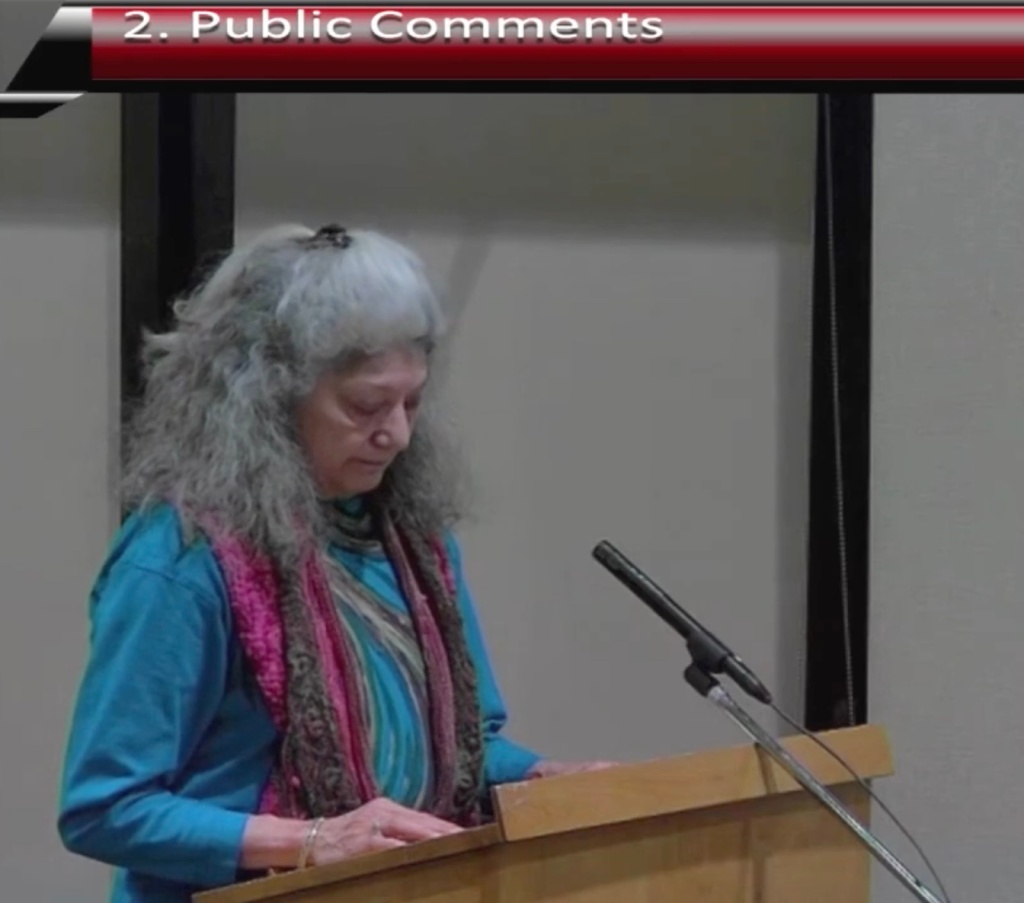
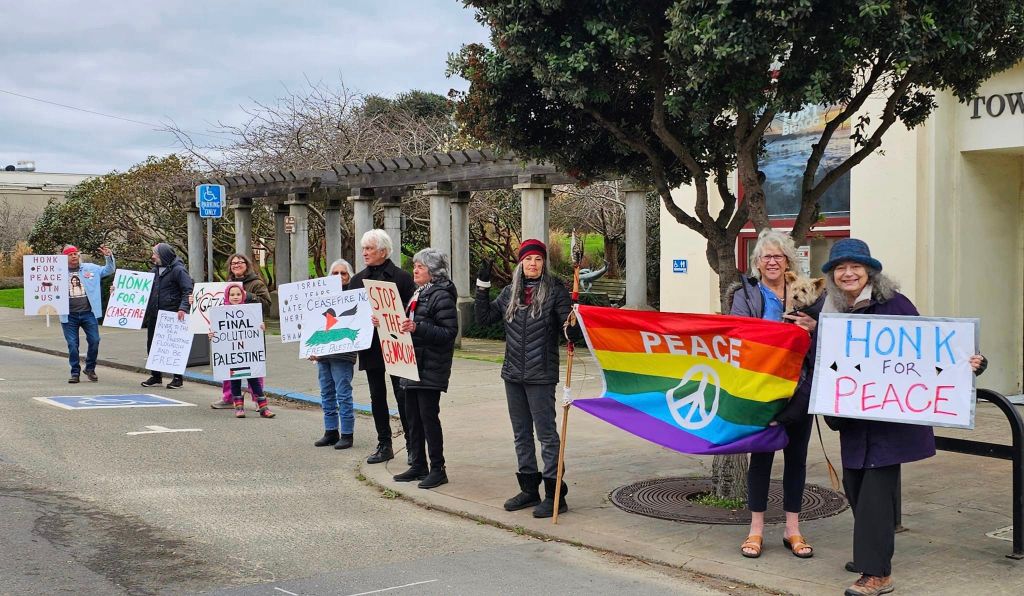
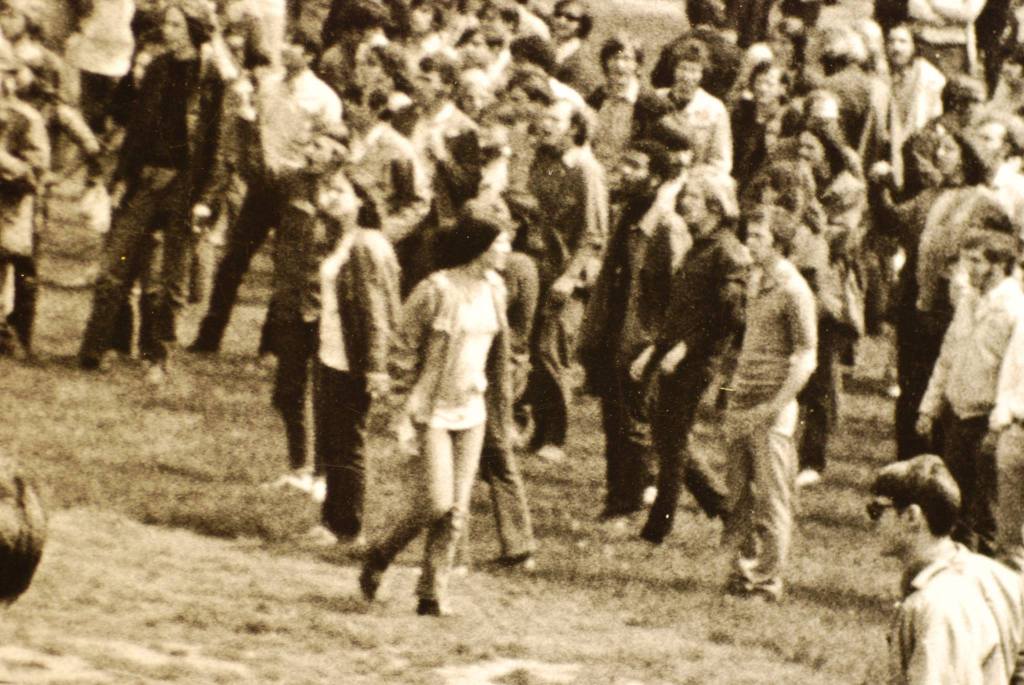

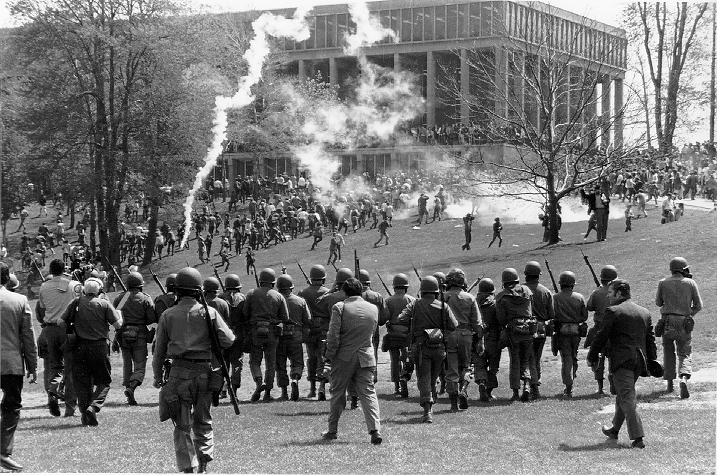
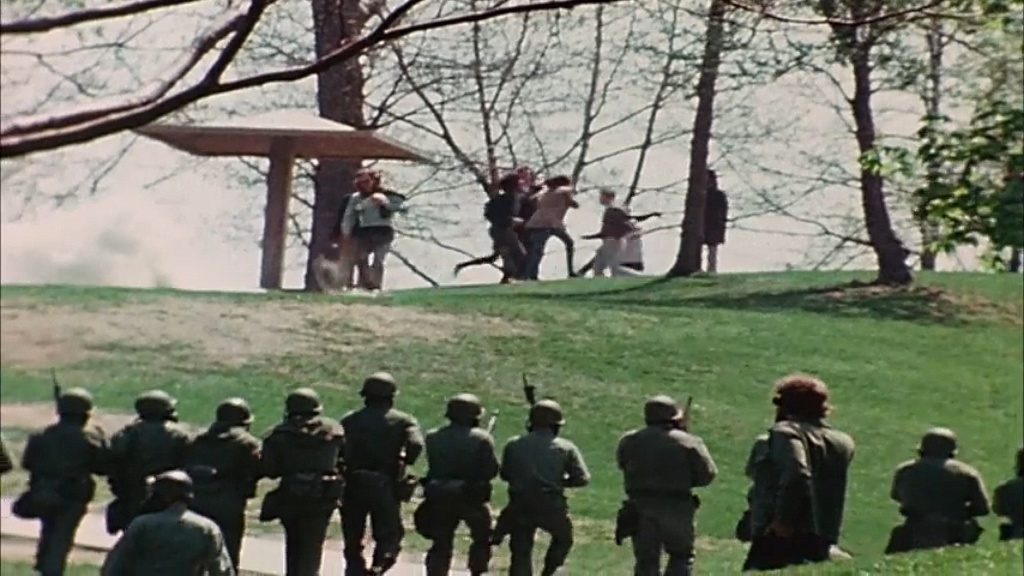
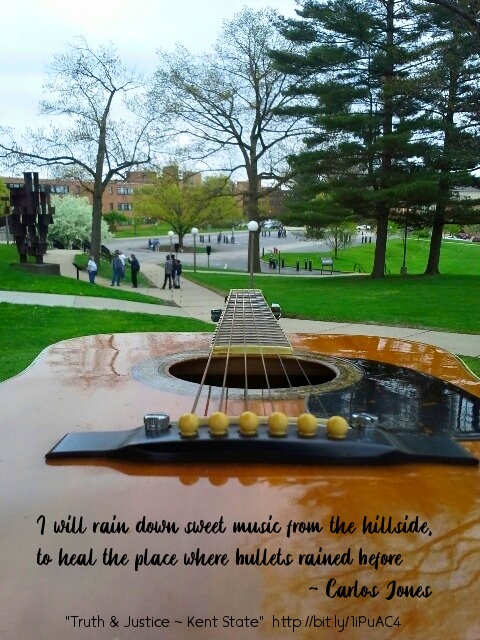
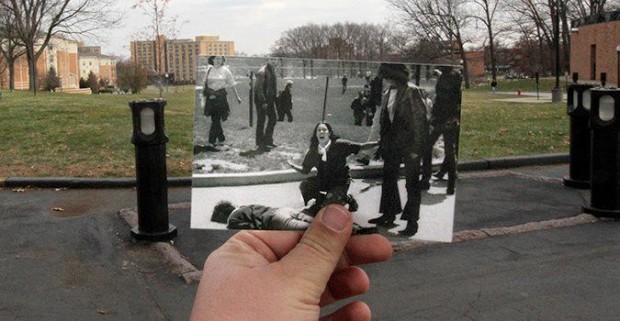



 My name is Carlos Jones. I am a musician. I live in Cleveland, Ohio – Shaker Heights to be exact. I’m here today at the request of the family of Allison Beth Krause, to speak for her as we commemorate the 49th year since that particular tragedy.
My name is Carlos Jones. I am a musician. I live in Cleveland, Ohio – Shaker Heights to be exact. I’m here today at the request of the family of Allison Beth Krause, to speak for her as we commemorate the 49th year since that particular tragedy.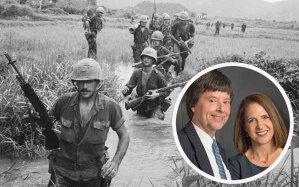
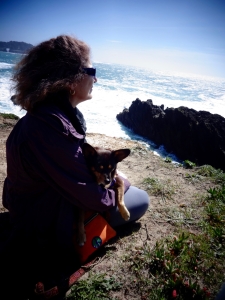 When I first chose to write this paper on Laurel Krause, I was expecting it to be just like any other short research paper on a human being. Read up on their accomplishments, read some interviews, look up different articles, et cetera, et cetera. Little did I know that I would have the wonderful opportunity to sit down and have a phone conversation with Laurel herself. It was a quiet Sunday afternoon on May 1st when I decided to make the call – I had been mulling over the decision as to when to call since hearing back from Laurel. I was extremely nervous to call and make a fool of myself.
When I first chose to write this paper on Laurel Krause, I was expecting it to be just like any other short research paper on a human being. Read up on their accomplishments, read some interviews, look up different articles, et cetera, et cetera. Little did I know that I would have the wonderful opportunity to sit down and have a phone conversation with Laurel herself. It was a quiet Sunday afternoon on May 1st when I decided to make the call – I had been mulling over the decision as to when to call since hearing back from Laurel. I was extremely nervous to call and make a fool of myself.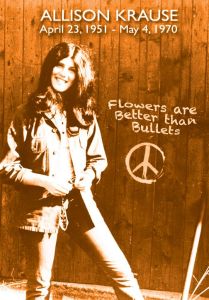 Another May 4th parent has died since last we gathered to commemorate this event. Another mother has left us before the truth is clear and justice is served. My aunt,
Another May 4th parent has died since last we gathered to commemorate this event. Another mother has left us before the truth is clear and justice is served. My aunt, 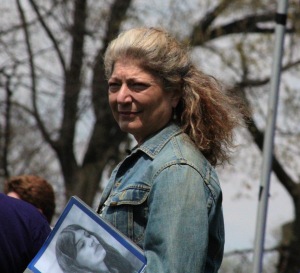

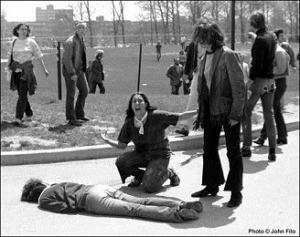
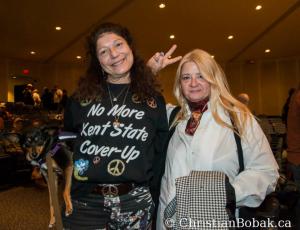
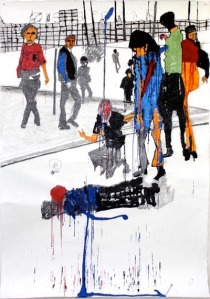
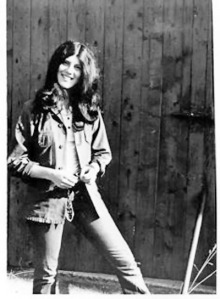















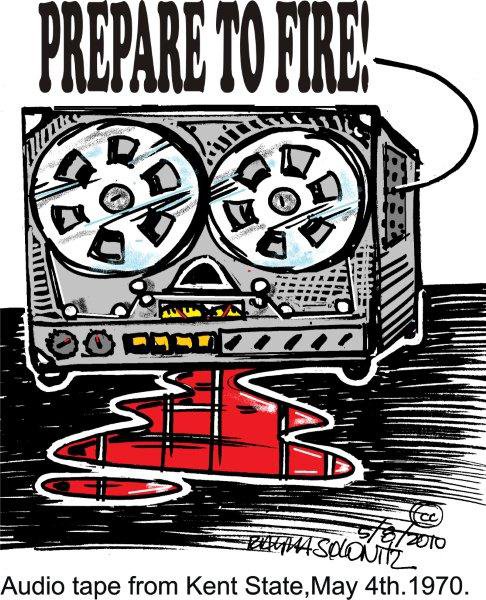


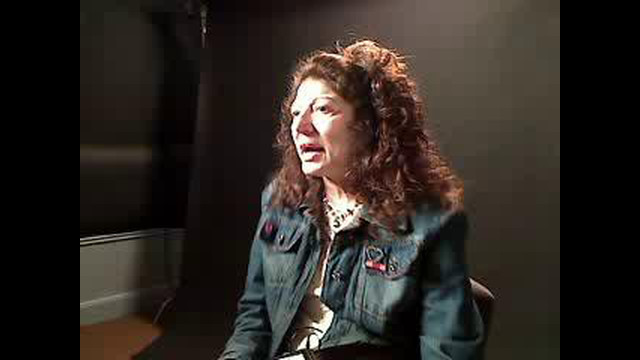 Watch Laurel Krause in her Kent State Truth Tribunal testimonial, May 1, 2010 in this live stream video.
Watch Laurel Krause in her Kent State Truth Tribunal testimonial, May 1, 2010 in this live stream video.

